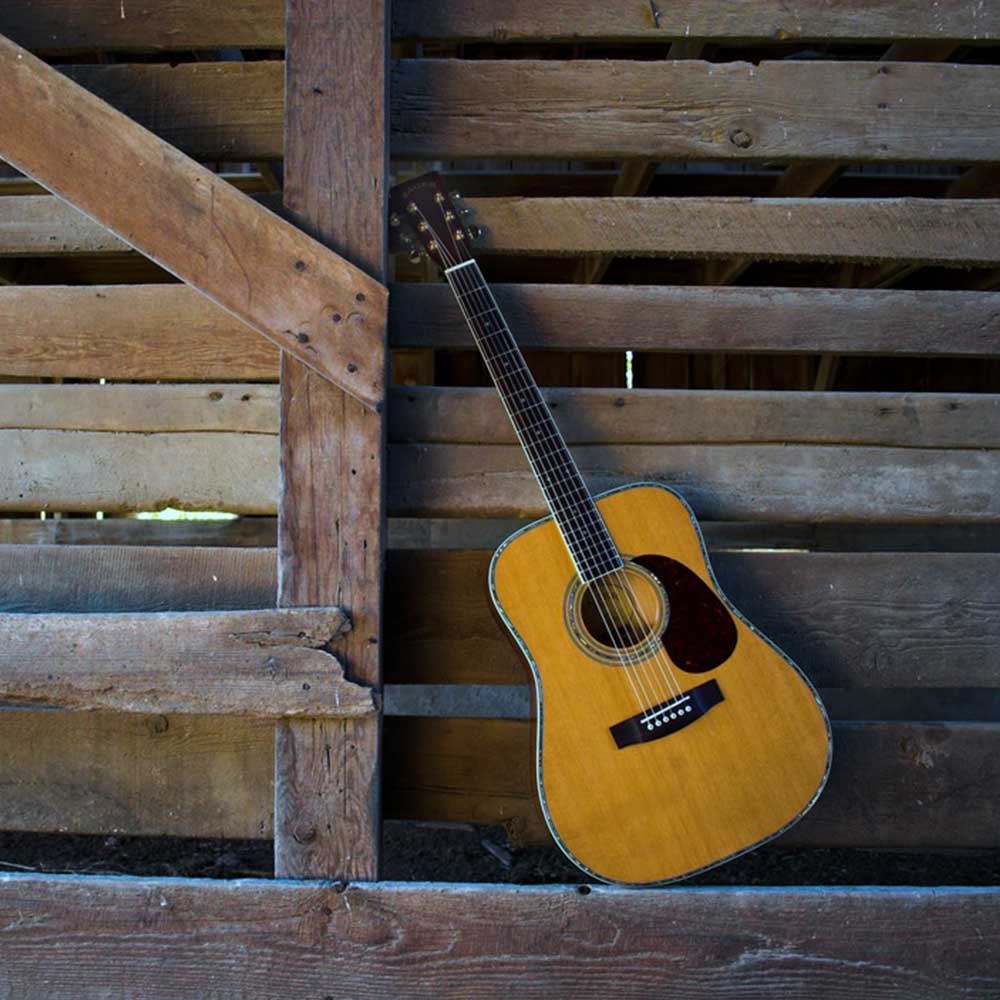Article: How to Achieve Drop D Tuning on Your Guitar

How to Achieve Drop D Tuning on Your Guitar
One of the best things about the guitar is its versatility. With a single instrument, you can produce a wide range of effects and play songs with different moods and spirits.
Drop D tuning is one way to reinvent the sound that a guitar produces, and many professional musicians employ the tuning technique to bring heavy, bold sound to alternative and heavy metal music. But what exactly is it and how can you do it yourself?
In this drop D tuning guitar guide, we'll break it down for you while also exploring the benefits and drawbacks of drop D tuning.
What Is Drop D Tuning on a Guitar?
Drop D tuning for guitar is a method of tuning that drops a guitar down one step. It emerged during the 1980s and has been used in alternative and heavy metal music ever since.
To understand exactly what drop D tuning is, it's helpful to first review what standard tuning is. With standard tuning, the lowest string is E. The next strings are A, D, G and B, and the highest is E. When you want to play a D cord with standard tuning, you position your index, middle and ring fingers on the highest-toned strings and strum down from the fourth string since that is D.
With drop D tuning, you make the pitch of your guitar lower. Once tuned, the lowest string becomes D, and the strings that follow it are A, D, G, B and E. To play a D chord, you maintain the same finger shape as you do with standard tuning but can now strum all the strings, and the result is fuller, richer sound.
You can also do 7-string guitar tuning in drop D. With this tuning method, you keep the lowest string at B. Then, you tune the next highest to D, and the remaining strings are A D G B E. This varies from standard 7-string guitar tuning, which is B-E-A-D-G-B-E.
Advantages and Disadvantages of Drop D Tuning
Drop D tuning for guitar is popular because it offers a number of benefits, including:
- Simplicity: Drop D tuning is one of the easiest alternative tuning methods to learn, so it can be a great way for beginners to alter their sound.
- Easier playing: Certain riffs and cords are much easier to play in drop D tuning.
- Access to a lower pitch: By drop D tuning, you can lower the pitch of the song to change its sound or suit a singer with a lower voice.
- Effects: Drop D tuning lends a heavier, fuller sound to songs.
- Versatility: Drop D tuning works well for both alternative and heavy metal styles, making it possible for you to play more types of music.
For all its benefits, drop D tuning does have some potential disadvantages that you need to be aware of. These include:
- Difficulty playing certain scales and cords: Standard tuning is based on fourths, so it lends itself to playing all scales. Drop D tuning increases the separation to fifths, so it can be more challenging to play some scales. Some drop D tuning guitar chords are harder to play as well.
- Sound: Although drop D tuning is versatile, it's not always the best choice for every genre. Brighter, lighter-sounding songs like those in the folk or pop rock genre will have a much different sound in drop D.
- Transposition: When performing covers not originally in drop D, you'll need to spend time transposing the song before you can play it.
How to Tune Your Guitar to Drop D
If you want to try your hand at drop D tuning for guitar, here's how to do it:
- Pluck the E string
- Turn the peg toward you
- Continue strumming until you reach the D note
If you're tuning a 7-string guitar, you'll use the same technique, plucking the E string, but you'll be tuning the second-lowest string rather than the lowest.
While you can tune a guitar to drop D by ear, using a guitar tuner makes the process simpler and more precise. With its LED red and green light display, the Zager High Accuracy Sonic Guitar Tuner allows you to easily see when your guitar is tuned. More accurate than smartphone apps, the guitar tuner will help you achieve that authentic full sound with greater ease.
Drop D Tuning in Rock Music
To give you a feel for the types of sound that drop D tuning can produce, here are some examples of electric and acoustic guitar songs in drop d tuning:
- All Nightmare Long by Metallica
- Black Hole Sun by Soundgarden
- Dear Prudence by The Beatles
- Decode by Paramore
- Du Hast by Rammstein
- Everlong by the Foo Fighters
- Heart-Shaped Box by Nirvana
- If Eternity Should Fall by Iron Maiden
- I Won't Give Up by Jason Mraz
- Killing in the Name by Rage Against the Machine
- Moby Dick by Led Zeppelin
- Never Going Back Again by Fleetwood Mac
- New Born by Muse
- Radioactive by Imagine Dragons
- Schism by Tool
- Sugar We're Going Down by Fallout Boy
- Whatsername by Green Day
Tune Your Guitar to Drop D With Zager
In short, drop D tuning is when you drop the lowest string on a six-string guitar one step lower, bringing down the pitch. While it does shift the spacing to fifths rather than fourths and can complicate playing some scales and cords, drop D tuning for guitar can give you heavier, fuller sound that's great for heavy metal and alternative rock music and make it simpler to play certain riffs and cord. Drop D tuning is also one of the easiest alternative tuning methods to learn, particularly when you use a highly precise tuner like Zager High Accuracy Sonic Guitar Tuner.
Check out the Zager High Accuracy Sonic Guitar Tuner and shop our selection of guitars. Plus, browse our lesson library to learn more about playing guitar.













































